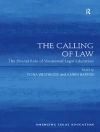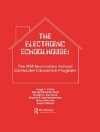Combining the latest thinking in the field with practical, step-by-step guidance, the Third Edition of John W. Creswell and Vicki L. Plano Clark’s Designing and Conducting Mixed Methods Research now includes seven mixed methods designs with accompanying journal articles illustrating each design. The authors walk readers through the entire research process and present updated examples from published mixed methods studies drawn from multiple disciplines. In addition, this new edition includes information about the dynamic and evolving nature of the field of mixed methods research, four additional methodological approaches, and coverage of new directions in mixed methods.
Mục lục
List of Figures
List of Tables
Preface
Purpose of the Book
Audience for the Book
Book Features
New Features Added to the Third Edition
Acknowledgments
About the Authors
Chapter 1 • The Nature of Mixed Methods Research
Defining Mixed Methods Research
Examples of Mixed Methods Studies
What Research Problems Require Mixed Methods?
What Are the Advantages of Using Mixed Methods?
What Are the Challenges in Using Mixed Methods?
Summary
Activities
Additional Resources to Examine
Chapter 2 • The Foundations of Mixed Methods Research
Historical Foundations
Philosophical Foundations
Theoretical Foundations
Summary
Activities
Additional Resources to Examine
Chapter 3 • Core Mixed Methods Designs
Key Concepts That Inform Mixed Methods Designs
The Three Core Mixed Methods Designs
Additional Considerations in Choosing a Core Design
Describing a Design in a Written Report
Summary
Activities
Additional Resources to Examine
Chapter 4 • Complex Applications of Core Mixed Methods Designs
Intersecting Core Mixed Methods Designs With Other Research Approaches or Frameworks
Four Prominent Types of Complex Mixed Methods Designs
Drawing Diagrams of Complex Applications
Summary
Activities
Additional Resources to Examine
Chapter 5 • Introducing a Mixed Methods Study
Writing a Mixed Methods Title
Stating the Research Problem in the Introduction
Developing the Purpose Statement
Writing Research Questions and Hypotheses
Summary
Activities
Additional Resources to Examine
Chapter 6 • Collecting Data in Mixed Methods Research
Procedures in Collecting Qualitative and Quantitative Data
General Considerations for Data Collection in Mixed Methods
Data Collection Within the Mixed Methods Designs
Summary
Activities
Additional Resources to Examine
Chapter 7 • Analyzing and Interpreting Data in Mixed Methods Research
Procedures in Quantitative and Qualitative Data Analysis and Interpretation
Mixed Methods Data Analysis and Interpretation
Integrated Data Analysis and Interpretation Within the Mixed Methods Designs
Validity and Mixed Methods Designs
Software Applications and Mixed Methods Data Analysis
Summary
Activities
Additional Resources to Examine
Chapter 8 • Writing and Evaluating Mixed Methods Research
General Guidelines for Writing
Relate the Mixed Methods Structure to the Type of Writing
Evaluating a Mixed Methods Study
Summary
Activities
Additional Resources to Examine
Chapter 9 • Advances in Mixed Methods Research
Advances in Mining Data
Advances in the Insight Gained Through the Value of Mixed Methods Research
Advances in Mixed Methods Designs
Advances in Representations of Design Procedures
Advances in Integration
Advances in Creating Mixed Methods Questions and Study Aims
Advances in Representing Integration Through Joint Displays
Advances in Mixed Methods Validity
Advances in Understanding Skills Required for Mixed Methods
Advances in Publishing Mixed Methods Manuscripts
Summary
Activities
Additional Resources to Examine
Appendix A: Unwritten Rules of Talking to Doctors About Depression: Integrating Qualitative and Quantitative Methods
Appendix B: Students’ Persistence in a Distributed Doctoral Program in Educational Leadership in Higher Education: A Mixed Methods Study
Appendix C: The Development of Client Violence Questionnaire (CVQ)
Appendix D: Evaluation of the Effectiveness of Robotic Gait Training and Gait-Focused Physical Therapy Programs for Children and Youth With Cerebral Palsy: A Mixed Methods RCT
Appendix E: Reconciling Data From Different Sources: Practical Realities of Using Mixed Methods to Identify Effective High School Practices
Appendix F: Understanding Transitions in Care From Hospital to Homeless Shelter: A Mixed-Methods, Community-Based Participatory Approach
Appendix G: Mixed Methods in Intervention Research: Theory to Adaptation
Glossary
References
Index
Giới thiệu về tác giả
Vicki L. Plano Clark, Ph.D., is professor of research methods in the School of Education at the University of Cincinnati, U.S.A. She is an applied research methodologist who studies, applies, teaches, mentors, consults, and writes about the adoption and use of mixed methods research. Her scholarship focuses on resolving methodological issues associated with mixed methods designs and understanding larger contexts that influence the application of mixed methods research. Her writings include Designing and Conducting Mixed Methods Research (2018, coauthored with John W. Creswell) and Mixed Methods Research: A Guide to the Field (2016, coauthored with Nataliya V. Ivankova). She serves as Associate Editor for the Journal of Mixed Methods Research and Editor of the Mixed Methods Research Series with Sage Publishing. She has held leadership roles for the Mixed Methods Research Special Interest Group and the Professors of Educational Research Special Interest Group of the American Educational Research Association (AERA). She is dedicated to advancing opportunities for students and scholars across disciplines to understand and apply diverse research methods to address important real-world problems.












